Top 8 Famous Traffic Calming Devices!
People have used traffic calming devices for decades. However, their forms, structures, and functionalities have evolved over the years.
Transportation engineers have designed many new, advanced, and effective devices to make parking lots, crosswalks, traffic lanes, and work zones safe for people.
These devices mainly control vehicular speed to prevent accidents. They make roads and city streets safe for both drivers and pedestrians.
For more information, you can discover here: What are the Famous Traffic Calming Devices?
In this article, we have briefly introduced the top 8 traffic calming devices to tell you why they are important and why the transportation department uses them.

Discover here our full range of Speed Cushions!
Speed humps
Speed humps are the vertical deflection measures installed across the width of a road. They have raised structures that slow down traffic speed from 10 to 15 miles per hour (mph). People install them in various places, including roadways, parking lots, school zones, roundabouts, and city streets.
They are designed such that drivers must reduce their speed while driving over them. Otherwise, they will experience a sudden jolt.
Speed humps and similar traffic control devices are generally not used on roads from where emergency vehicles like fire trucks and ambulances pass often. They can negatively influence their response time.
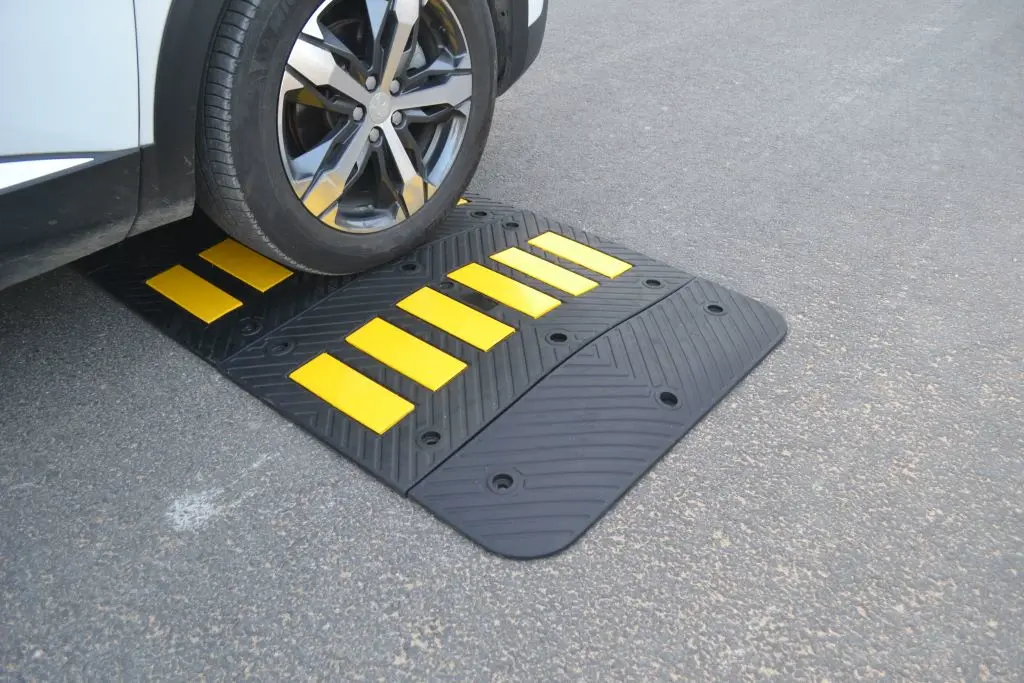
Speed bumps
They are the modified version of speed humps. The key difference between these two devices is their size.
A speed bump has more height and short length than a speed hump. It is also more aggressive on vehicles due to its height. The federal highway administration uses them on the roadway where they want to reduce vehicular speed up to 10 mph.
They control traffic volume in parking spaces and raise pedestrian safety there. However, they may increase the tripping hazard. Therefore, you should install advance warning signs to inform pedestrians about their presence.
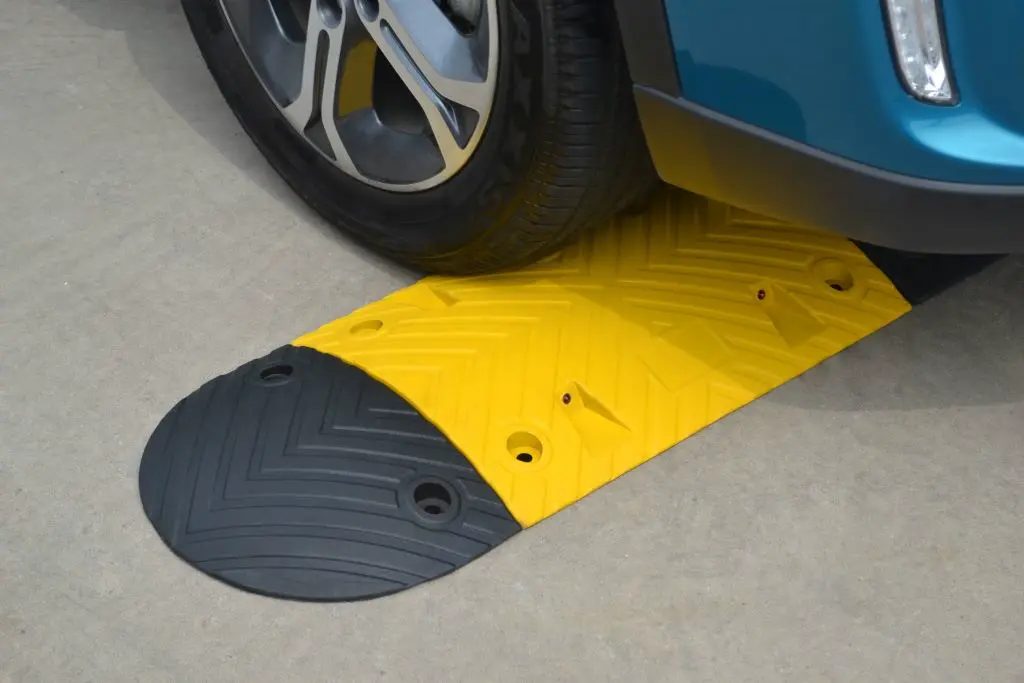
Speed cushions
These are very effective traffic-management tools used on emergency vehicle routes because, unlike other traffic calming measures, they do not force ambulances, fire trucks, and other large-axle vehicles to reduce their acceleration.
They are long, but their width is shorter than the road’s width. Usually, a road cushion is installed in the center of a traffic lane, and another speed cushion is installed in the next traffic lane. A small gap is left between these devices. This gap allows bicyclists and cyclists to move without reducing their speed.
The width of a speed cushion is more than that of a car but smaller than that of large vehicles like buses, police vans, etc., which is why they can drive over it easily. It can reduce the speed of cars up to 20 mph.
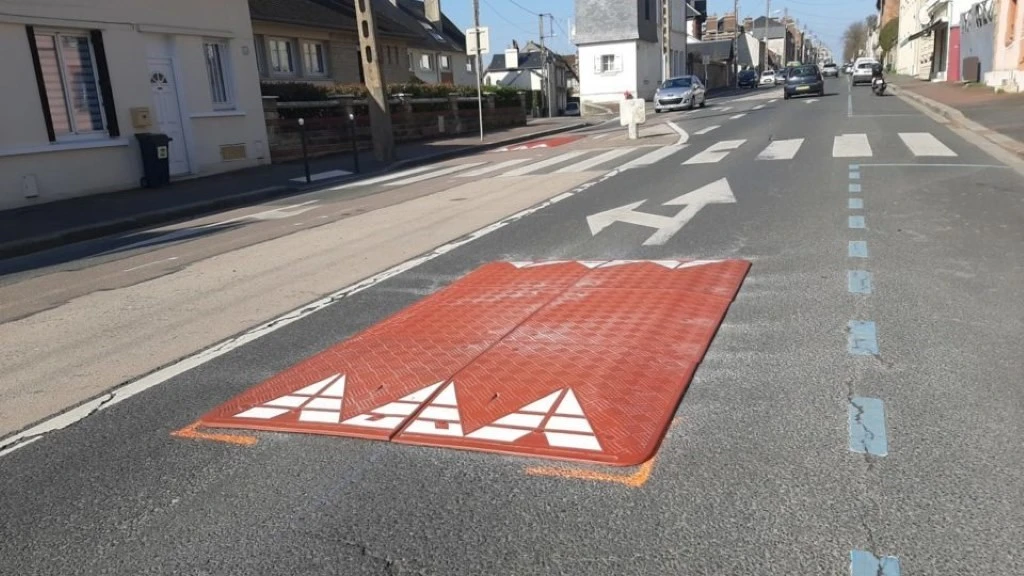
Wheel stops
Wheel stops are used in parking areas. They act as barriers or obstacles that prevent vehicles’ unwanted forward or backward movement.
They inform drivers where they should park their vehicles without using the parking area of another vehicle or covering pedestrian pathways or cycle lanes.
Wheel stops prevent collisions between parked vehicles. People use them in indoor as well as outdoor parking spaces. They generally have reflective tape that shines when vehicular light falls on them. It increases their visibility to drivers.
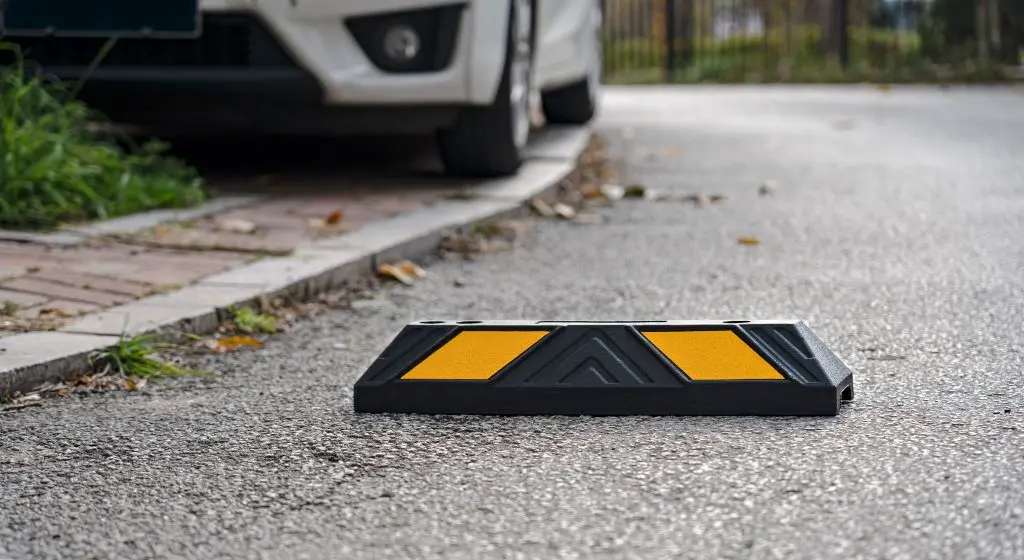
Raised pedestrian crossings
As the name indicates, these are pedestrian crossings with a flat surface raised to the sidewalk level. They have white or yellow markings to indicate their presence and make foot traffic more visible to oncoming vehicles.
These crossings effectively slow down vehicles and provide pedestrians with a safe area to cross the road. People often install them in a school zone, driveway, work zone, or traffic intersection.
However, they can prevent rainwater drainage. Hence, they should be installed in the right place to avoid water accumulation.

Get in touch
The Speed Cushions Factory is a leading manufacturer of rubber speed cushions located in Qingdao, China.
Feel free to contact us!
We are always here to help!
Qingdao, Shandong Province, China.
sales@speed-cushion.com
Traffic diversions
Traffic diversions provide a new route to vehicles when they cannot drive through their regular road because it is under construction. It increases the safety of equipment deployed for construction as well as the safety of workers.
They prevent traffic blockage and provide a pathway to all vehicles, such as bicycles, cycles, buses, cars, etc.
They are usually of two types based on where they are made. They can be made on the existing road still under construction or temporarily constructed on the road stretches otherwise used for foot traffic.
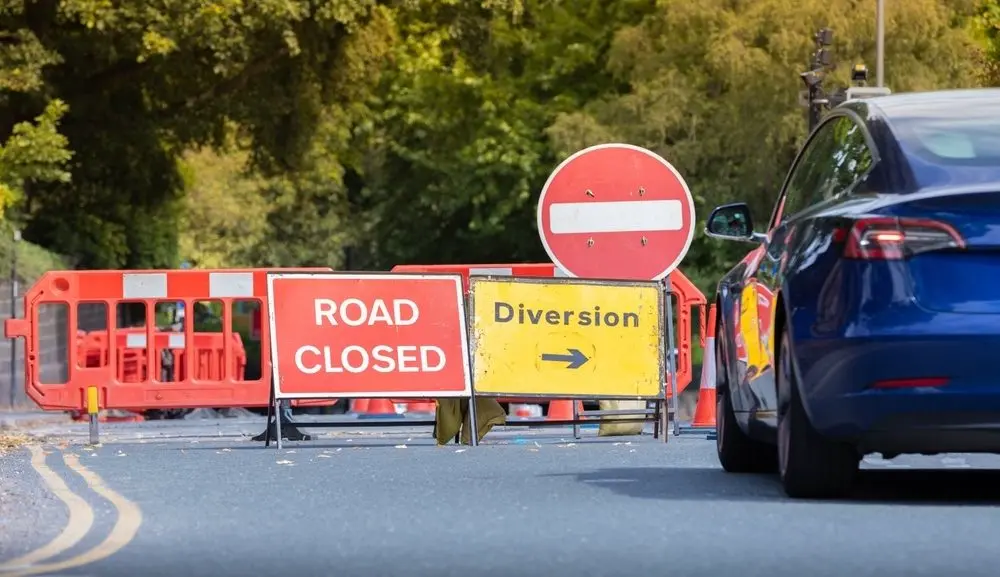
Roundabouts
A roundabout is a kind of traffic calming measure that slows down vehicular speed while they enter or exit an intersection.
They are better than traffic signals because they have fewer conflict points (where vehicular crashes occur at intersections).
Their median islands and circles create the perfect structure to slow down vehicles. They provide drivers enough time to reduce their acceleration before they collide with any other vehicle or pedestrian. They also reduce the severity of accidents in case they occur.

Rumble strips
Rumble strips are placed across the length of roads. They are small in size and have a raised surface that alerts inattentive or drowsy drivers when their vehicles have contact with them.
They create vibration and sound when a vehicle’s wheels collide with them, which alerts the driver and makes him more conscious of the upcoming traffic, intersection, or pedestrian crossing.
They have a reflective surface that makes them visible even when there is no street light.
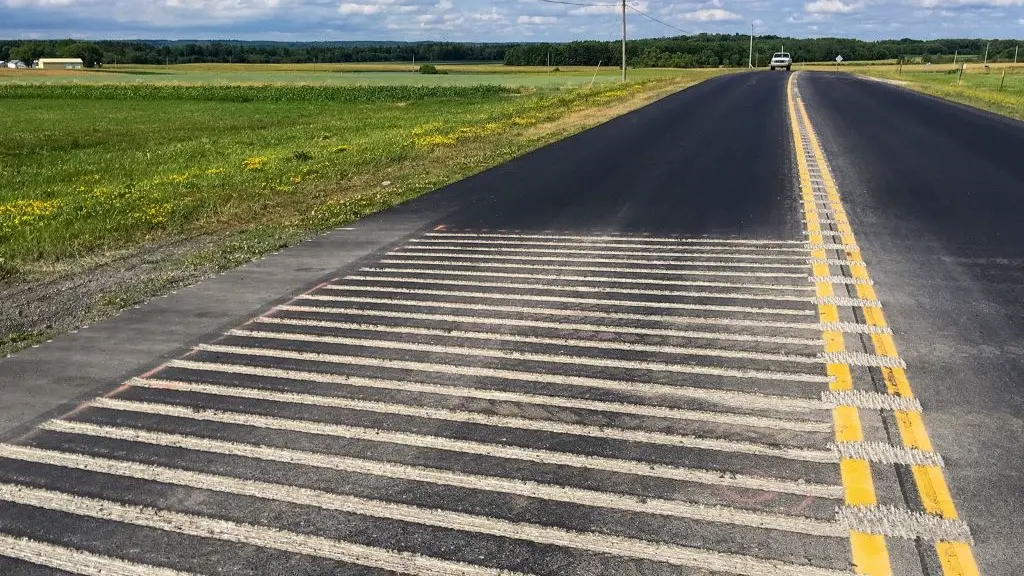
What makes speed cushions better than speed bumps and humps?
Speed cushions, speed bumps, and speed humps are the most commonly used traffic calming devices in the US.
However, speed cushions are better than the other two because of many reasons, such as:
- They have wheel cutouts that allow the wheels of large-sized vehicles to pass easily without reducing their speed. It makes them highly suitable for emergency vehicle routes.
- The gap between the two speed cushions allows free movement of rainwater, helping prevent water from pooling. On the other hand, speed humps and bumps may cause water accumulation because they do not have such gaps.
- They do not affect the speed of bicyclists and cyclists, which makes them suitable for roads where speed reduction is not required for cyclists.
- Speed cushions are not as aggressive as speed humps and bumps. They have an elongated surface, due to which their effect on vehicles is not very large.
- They reduce vehicular speed from 20 to 25 mph while speed humps and bumps reduce speed up to 15 mph.
- You can use them for various purposes, such as increasing pedestrian safety, reducing vehicular accident frequency, decreasing accident severity, etc.

Conclusion
Traffic calming devices are must-haves for roads, city streets, and parking spaces because they make them safe for vehicular and pedestrian traffic.
There are different kinds of traffic control devices available in the market. Each serves a unique purpose. You can select any of them based on your specific needs.
If you need an effective speed reduction tool for emergency vehicle routes, you should use speed cushions. They slow down standard cars without slowing down emergency vehicles. They offer additional benefits that you may not be able to find in other speed control tools like speed bumps and humps.
Get in touch
The Speed Cushions Factory is a leading manufacturer of rubber speed cushions located in Qingdao, China.
Feel free to contact us!
We are always here to help!
Qingdao, Shandong Province, China.
sales@speed-cushion.com
You might be interested in the below articles: